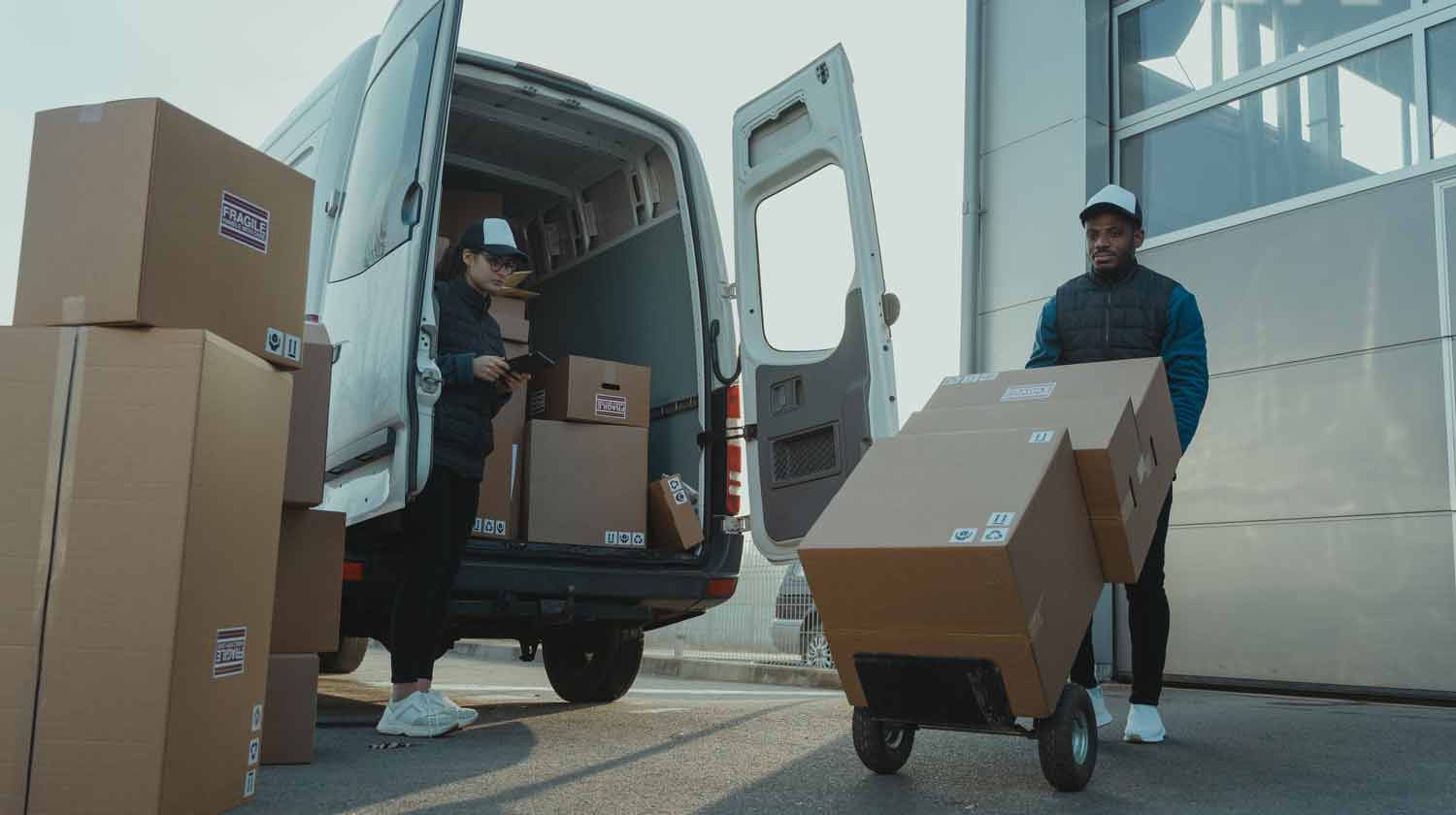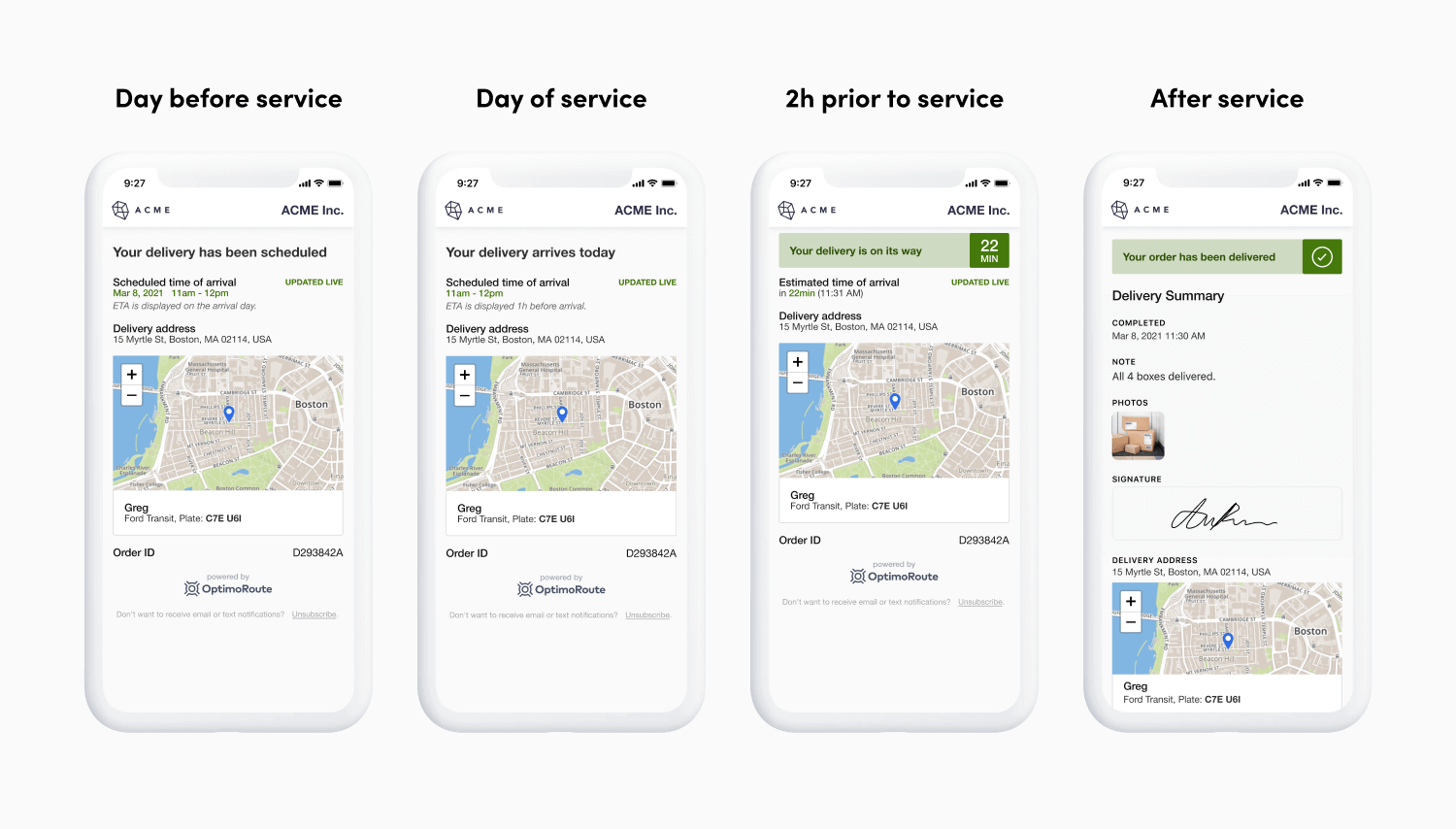Ecommerce Fulfillment: Top Strategies for Exceeding Customer Expectations

The global ecommerce industry is expected to hit $5 trillion in sales by 2022. If you’re an online business, this means you have to prepare for more demand over the next year and figure out a way to meet that demand through ecommerce fulfillment.
A solid ecommerce fulfillment strategy will help you efficiently ship and deliver products to your customers. This will, in turn, boost your store’s overall reputation and could result in higher sales as customers are happy to buy from you again.
In this article, we’ll dive into how ecommerce fulfillment works, what top strategies or models you should consider, and how you can optimize your fulfillment process (especially through your last mile delivery services) to help you exceed customer expectations and make your store more profitable.
Jump ahead to the section that’s most relevant to you:
- How Does Ecommerce Fulfillment Work?
- How Is It Different Than Ecommerce Shipping?
- Top Strategies/Models of Ecommerce Fulfillment
- How to Optimize Your Ecommerce Fulfillment Strategy
- Top-Notch Ecommerce Fulfillment Is Key to Customer Satisfaction
What Is Ecommerce Fulfillment?
Ecommerce fulfillment is the process of handling customer orders placed online and getting them efficiently shipped and delivered to their destinations on time. Ecommerce fulfillment includes processes such as inventory management, order management, warehouse management, order fulfillment (picking, packing, and shipping), and returns management.
Here’s a quick overview of each stage of ecommerce fulfillment:
- Inventory management and warehouse management: This is the first stage of fulfillment where you receive your store’s products from the manufacturer you work with and store this inventory in a logical, easy-to-find manner in your warehouse or fulfillment center.
- Order management: This stage covers everything related to customer orders: receiving the orders placed online, tracking the progress and shipment of these orders, and delivering them to their recipients.
- Order fulfillment: While similar to the last stage, the order fulfillment pocess is more specific in that it entails the physical process of handling, picking, packing, and shipping items to customers.
- Returns management: Ecommerce fulfillment isn’t over when the item is delivered to the customer; sometimes they want to return what they bought, which is where returns management comes in to process order returns and restock/reshelve the returned products.
How Is It Different Than Ecommerce Shipping?
As a holistic system, ecommerce fulfillment is different than ecommerce shipping, which is only a part of the larger fulfillment process.
Ecommerce shipping specifically refers to the order fulfillment step of getting products from retailers to customers. It involves pulling your products from the warehouse or storage shelves, pricing your shipments, selecting packaging, reviewing carriers to find the best shipping rates, mailing the products to customers, and monitoring and enhancing last mile delivery statuses.
You can read more about how ecommerce shipping works in particular in this OR blog post .

Top Strategies/Models of Ecommerce Fulfillment
Since ecommerce fulfillment is such a large and important undertaking for your online store that touches many different parts of the supply chain, it’s important you know what models are available, so you can better understand which one(s) may work best for you.
Self-fulfillment
This is usually where most small businesses and startups begin. Self-fulfillment, or in-house delivery, is a cost-effective way to handle your ecommerce fulfillment services and is the best method from a quality control perspective (it’s hard to control the quality of delivery and the state of your items if you don’t do it yourself).
The downsides of this strategy include buying and storing all shipping supplies yourself, handling customer support/concerns, and dealing with transportation costs and frustrations. Fortunately, with route optimization software, many of these problems go away, making self-fulfillment the best option for small businesses, especially those that have lots of local deliveries and want to create an exceptional last mile delivery experience for their customers while saving money.
3PL (third-party logistics)
3PL, or third-party logistics, is where you outsource your ecommerce fulfillment needs entirely by handing off your inventory, order, shipping, warehousing, and returns processing responsibilities to a third-party fulfillment company.
While this option reduces your workload, order fulfillment services are often more expensive than self-fulfillment. However, you won’t have to handle anything related to fulfillment, so you can focus on scaling and revenue-building activities like marketing and customer service instead.
Dropshipping
Dropshipping is a massive segment of the global ecommerce market, with an expected compound annual growth rate of 28.8% from 2019 to 2025. As the seller, you never actually touch the product but instead work with a manufacturer who handles and ships orders directly to the customer.
A couple of drawbacks with this method are its competitiveness (there’s such a low barrier to entry with this model that almost any product-based business can use it) and potentially long shipping and delivery times if your manufacturer isn’t local to your area or country.
Amazon FBA
Amazon’s share of the U.S. ecommerce sales will hit over 40% this year, so it’s no surprise some merchants are migrating to or utilizing some of Amazon’s offers, such as Fulfillment by Amazon (FBA), to handle their ecommerce needs.
However, depending on your products and shipping process, FBA can be expensive compared to other options, even other shipping options through Amazon (seller-fulfilled Prime and fulfilled by merchant/FBM). For example, if you sold an inflatable kayak through FBM, your profit would be over $20 vs. just $4 with FBA.
Hybrid
Last but not least, you could also pick a hybrid of any of these services to help you accomplish your fulfillment requirements. In a DHL survey, 48% of respondents in 2019 said they would use both insourcing and outsourcing fulfillment models over the following three to five years.
What this might look like is that you use Amazon FBA for shipping your products around the country but self-fulfill local orders on your own using route optimization software to deliver the maximum amount of orders possible.

How to Optimize Your Ecommerce Fulfillment Strategy
Now that you know what options you have for ecommerce fulfillment, you’re likely wondering how you can improve your fulfillment and delivery processes. Use the following steps to help you determine the best way(s) to optimize your strategy:
Evaluate your current fulfillment strategy
No matter how tight you believe your current ecommerce fulfillment may be, it can likely be improved in at least one or two areas. Some questions to ask yourself about your strategy include:
- In your current operations, are you running into logistics, storing, and efficiency problems?
- Are you struggling to keep up with orders and get them out the door?
- Do you feel you could spend your time better on other business needs?
Consider other business priorities
It’s important to determine if fulfillment is really your business’s top priority. If you want to scale, for example, you might be missing out on key revenue-driving tactics (i.e., marketing, branding, etc.) because you’re too focused on fulfillment responsibilities.
Likewise, if you want to reduce the frequency of customers complaining about slow deliveries, you need to put customer service front and center while outsourcing some or all of your fulfillment needs in order to speed up the delivery process and improve your reputation with customers.
Optimize Last Mile Delivery
For local orders, aim to optimize your last mile delivery process in particular. This is a vital step, if not the most important one, in the entire fulfillment process since the last mile of your product’s delivery accounts for more than 53% of your total shipping costs.
A smooth last mile delivery process helps you deliver more products more efficiently, which can result in higher sales and happier customers. For example, OptimoRoute helped Perth-based flower company Little Posy Co. deliver 1,000 orders in a single day, which was the same as an average week of deliveries for Little Posy.

Hire or outsource roles
When you determine there other fulfillment areas that you could outsource that aren’t a priority for your business, it’s time to look for a 3PL partner (or a new one, if your company is already working with one of these companies — more on this in the next section).
You could also consider a hybrid approach to improve your efficiency and make fulfillment easier without sacrificing some level of control over your fulfillment process and quality assurance. Whatever you choose, make sure to read reviews of 3PL carriers and select the ones that will make it easier for you to focus on other areas of your business.
Revaluate 3PLs
If you already work with a third-party fulfillment solution, they may no longer offer the best value for your growth, money, and time. For example, can you complete orders faster with a different partner that has more warehouse and fulfillment locations?
Conduct some research and get quotes from various 3PLs that are offering better fulfillment options for your business. Run some numbers and compare these fulfillment partners and logistics companies to determine which one would be best for improving your current ecommerce fulfillment process.
Choose tech solutions to streamline operations
Another way you can optimize your ecommerce fulfillment strategy is by harnessing automation and making sure you have the right tech solutions in place for maximum efficiency. New technology comes out all the time, and your old systems may not be the optimal solution for your business anymore.
Audit the tech solutions you currently work with and look for ones that will streamline your operations and fix any problems you may be experiencing. This could include any solution along your entire process, from your ecommerce platform to your last mile delivery and tracking software.
Adjust your ecommerce fulfillment model
Finally, don’t forget that as your business grows and your priorities change, you can swap to a completely different ecommerce fulfillment strategy. Maybe you’re at a point where you can now hire a 3PL to help you with the new two-day shipping option you’re able to offer, increasing the likelihood of getting more orders in the long run and boosting your overall profits.
It’s good to reevaluate your current strategy and adjust which models you’re using on a regular basis. For example, if you experience any frequently occurring problems six months after you partnered with a 3PL, take a moment to decide if the problems are on your end or if you need to move to a self-fulfillment, hybrid, or another type of fulfillment model.
Top-Notch Ecommerce Fulfillment Is Key to Customer Satisfaction
When you understand the importance of fulfillment in your ecommerce company and spend time and effort to optimize it, you’re ultimately investing in the quality of the customer experience and the future of your business’s success. That’s because an efficient fulfillment strategy will not only help your ecommerce business grow revenue overall, but it will also make customers happier since you’re able to deliver products more quickly and more accurately than ever before.
Want to see how OptimoRoute’s technology can maximize the all-important last mile delivery stage of your ecommerce fulfillment process? Try a demo of our product today.
Try OptimoRoute™ for Free
No installation or credit card required


